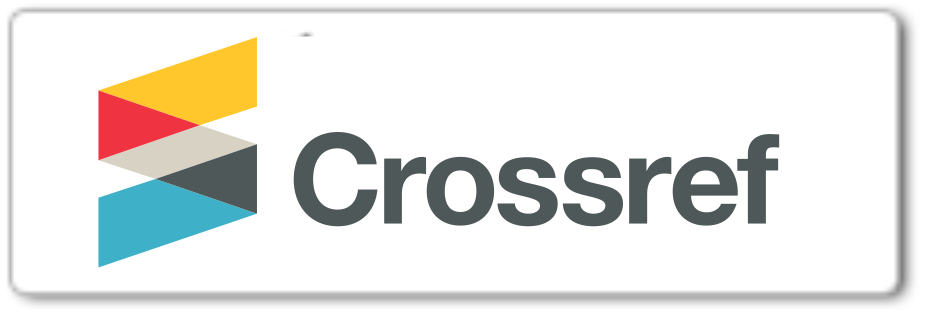Synthesis of Mesoporous Nickel Using Electrodeposition Method
Abstract
Mesoporous material technology has recently become increasingly popular among scientists and industry professionals. Electrodeposition is a metal deposition process that employs an electric current. The most typical applications of electrodeposition are metal coating (electroplating) and the creation of porous materials. This study aimed to analyze the effects of current and nickel synthesis time on the formation of mesoporous nickel morphology using corn starch. The method for producing mesoporous nickel deposits uses an electrodeposition process using corn starch additives. The process of making mesoporous nickel varies at currents of 4, 5, and 6 A, holding times of 3, 4, and 5 hours, and additional weights of corn starch of 1, 2, and 3 g, with the weight of nickel deposits produced being 1.19, 1.3, and 1.9 g, with an increase in nickel deposits from currents of 4 to 6 A (holding time of 3 to 5 hours) of 0.71 g (59.66%). The smallest pore diameter of 112 nm was obtained using a current of 6 A, a holding time of 5 hours, with 3 g of corn starch. Characterization was carried out on the electrodeposition layer using XRD (x-ray diffraction) and SEM-EDS (scanning electron icroscope-energy dispersive spectroscopy), where the results of the XRD analysis showed the presence of α-Ni, Ƴ-Fe, and Fe1Ni3 compounds, and the results of SEM-EDS showed porous Ni deposits with the highest Ni concentration above 80%. The bigger the current employed and the holding period in the electrodeposition process, the heavier the Ni deposit formed.
Keywords
Full Text:
PDFReferences
S. Polarz and B. Smarsly, “Nanoporous materials,” J Nanosci Nanotechnol, vol. 6, pp. 581-612, 2002. DOI: 10.1166/153348802321105860.
Y. D. Gamburg, G. Zangari, “Theory and practice of metal electrodeposition,” Springer, pp. 292-295, 2011. DOI: 10.1007/978-1-4419-9669-5
X. Pu, W. Zhang, M. Ma, D. Shi, S. Han, L. Xiong, “Atomic nickel on controllable mesoporous carbon nanospheres to boost electrochemical carbon dioxide reduction,” International Journal of Ionics The Science and Technology of Ionic Motion, vol. 29, pp. 3683-3692, 2023. DOI:10.1007/s11581-023-05095-8.
T. Kouznetsova, A. Ivanets, V. Prozorovich, P. Shornikova, L. Kapysh, Q. Tian, L. Péter, L. Trif, and L. Almásy, “Design of nickel-containingnanocomposites based on ordered mesoporous silica: synthesis, structure, and methylene blue adsorption,” MDPI Journal, vol. 10, no. 2, p.133, 2024. DOI:10.3390/gels10020133.
L. Hao and B. Liu, “Two-dimensional mesoporous metals: a new era for designing functional electrocatalysts,” Royal Society of Chemistry, Chemical Science, vol. 14, p. 13313, 2024. DOI: 10.1039/d3sc04244h.
W. Liu, M. Luo, F. Luo, Y. Liu, Y. Zhang,F. Shen, X. Zhang, G. Yang, L. Wang, S. Deng, “Three-dimensional Cu-Ni composite superamphiphobic surface via electrodeposition and fluoro silane,” Chinese Journal of Chemical Physics, vol. 33, pp. 343-348, 2020. DOI:10.1063/16740068/cjcp190510 9.
F. Nasirpouri, “Electrodeposition of nanostructured materials,” Springer Series in Surface Sciences, vol. 62, pp.1-32, 2017. DOI:10.1007/978-3-319-44920-3.
A. El-Zoka, A. G. Carcea, M. Ghaznavi, R. C. Newman, “Electrodeposition of metals and metal oxides into nanoporous gold,” ECS The Electrochemical Society, vol. 2, no. 16, pp 904-904, 2017. DOI: 10.1149/MA2017-02/16/904.
M. Miyake, A. Takahashi, T. Ikenoue, T. Hirato, “Fabrication of photocatalytic Al-TiO2 coatings by composite electrodeposition and anodization,” ECS The Electrochemical Society, vol. 01, no. 21, 2016. DOI: 10.1149/MA2016- 01/21/1129.
E. Juzeliunas, “Silicon electrowinning and electrodeposition of thin layers,” Silicon, pp. 49-76, 2022. DOI:10.1002/9783527831913.ch6.
R. A. Karim, Y. Reda, K. M. Zohdy, A. Abdelfatah, S. El-Raghy, “Electrochemical performance of porous Ni-Cu anodes for direct methanol fuel cells,” International Journal of Electrochemical Science, vol. 13, no. 3, 2019. DOI:10.20964/2019.03.59.
J. Zhang, M. D. Baro, E. Pellicer and J. Sort, “Electrodeposition of magnetic, superhydrophobic, non-stick, two-phase Cu-Ni foam films and their enhanced performance for hydrogen evolution reaction in alkaline water media,” Nanoscale, vol. 6, no. 21, pp. 12490- 12499, 2014. DOI:10.1039/c4nr03200d.
M. Faraday, “Experimental researches In electricity. Series VII (1834), On the absolute quantity of electricity associated with the decomposition of electrolytes,” Project Gutenberg, vol. 124, pp. 84-94, 2005. DOI:10.1098/rstl.1834.0008.
A. A. Bunaciu, E. G. Udriştioiu, and H. Y. A. Enein, “X-ray diffraction: instrumentation and applications,” Crit. Rev. anal. Chem., vol. 45, no. 4, pp. 289- 299, 2015. DOI:10.1080/10408347.2014.949616.
S. M. Janjan, F. Nasirpouri, M. G. Hosseini, “Electrodeposition mechanism of nickel films on polycrystalline copper from dilute simple sulphate solutions,” Russian Journal of Electrochemistry, vol. 47, no. 7, pp 787-792, 2011. DOI:10.1134/S1023193511070159.
F. Nasirpouri, S. M. Jajan, S. M. P. Sattari, M. G. Hosseini, A. Akbari, A. S. Samardak, “Refinement of electrodeposition mechanism for fabrication of thin nickel films on n-type silicon (111),” Journal of Electroanalytical Chemistry, vol. 690, no. 136, 2012. DOI: 10.1016/j.jelechem.2012.07. 005.
Shobit, S. Ritu and B. S. Khatkar, “Assessment of physicochemical properties of popular brands of corn starch for custard Preparation,” International Journal of Chemical Studies, vol. 8, no. 4, 3631-3637, 2020. DOI: 10.22271/chemi2020.v8.i4at 10211.
Y. Zou, X. Zhou, J. Ma, X. Yang and Y. Deng, “Recent advances in amphiphilic block copolymer templated mesoporous metal-based materials: assembly engineering and applications,” Chem. Soc. Rev., vol. 49, pp. 1173-1208, 2020. DOI:10.1039/C9CS00334G.
M. A. Ghanem, A. M. Mayouf, J. P. Singh, T. Abiti, and F. Marken “Mesoporous nickel/nickel hydroxide catalyst using liquid crystal template for ethanol oxidation in alkaline solution,” Journal of The Electrochemical Society, vol. 162, no. 7, pp. 453-459, 2015. DOI: 10.1149/2.0441507jes.

This work is licensed under a Creative Commons Attribution-ShareAlike 4.0 International License.
Refbacks
- There are currently no refbacks.

.png)











